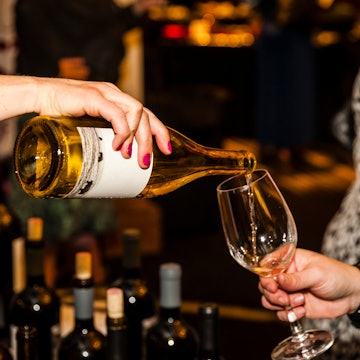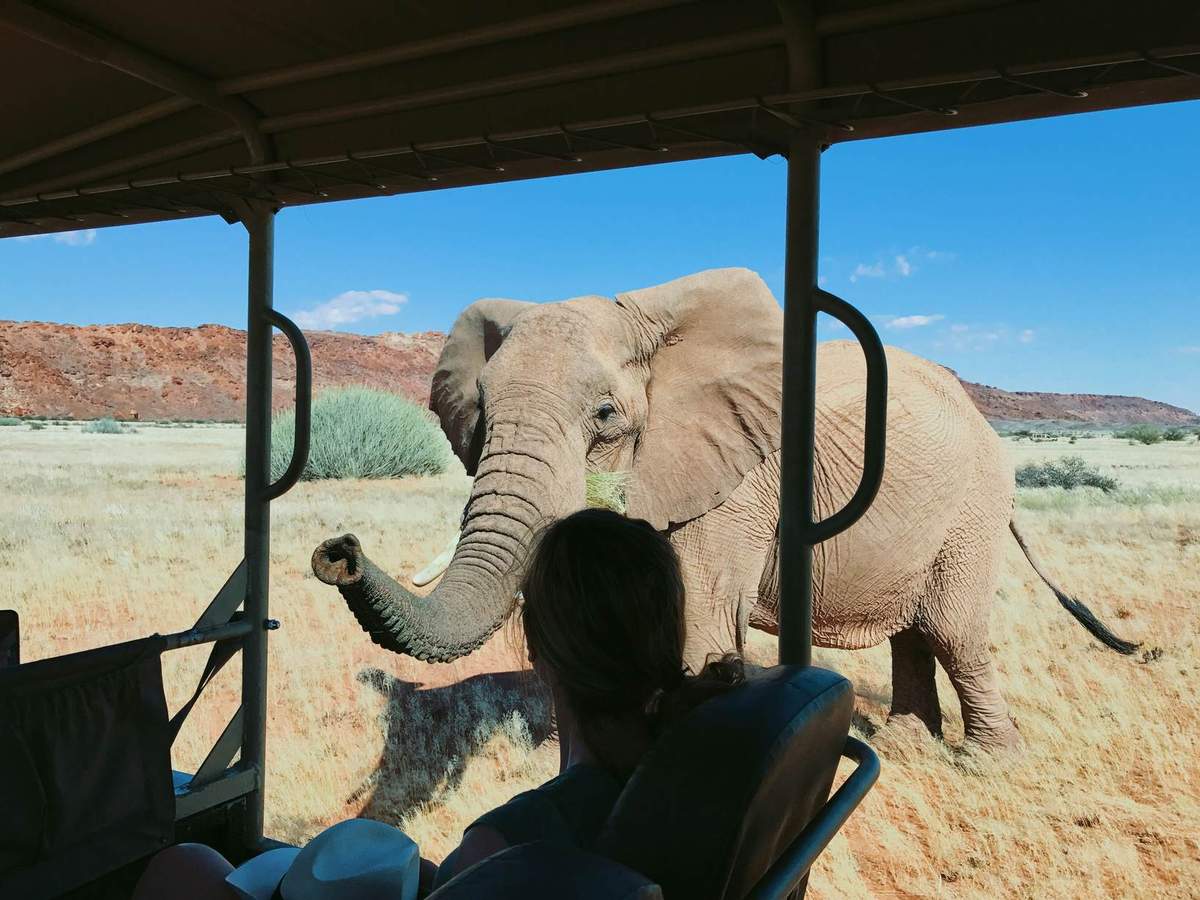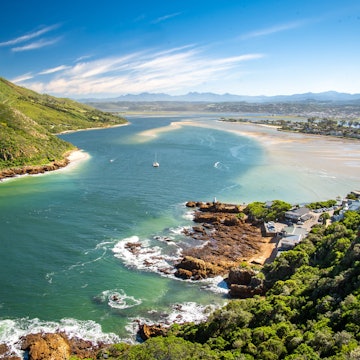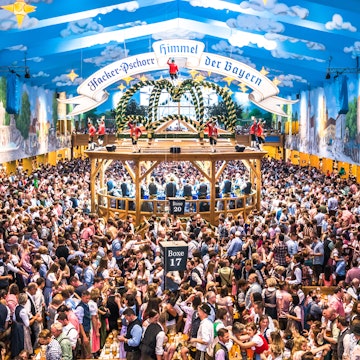

Eating is an excellent way to the heart of the Rainbow Nation. Dreamer Company/Shutterstock
South Africa's culinary diversity reflects its multicultural society, ranging from pan-African cuisine to seafood and steaks in globally acclaimed restaurants, so eating is an excellent way to the heart of the Rainbow Nation.
The Cape was the birthplace of South African cuisine, but KwaZulu-Natal is important too: there were migrants from other African countries, British colonialist settlers, Indian indentured laborers and Mauritians who planted exotic fruits and introduced spicy tomato sauces. Learning the cultural significance of South African cuisine leads to exciting explorations of the country's many specialties.
Learn more about the best traditional South African food and drinks in our guide.

1. Start with a traditional braai
South Africa’s beloved braais are feasts of barbecued meat and vegetables, grilled over charcoal or wood. Gas would be sacrilege, as there’s a culture of camaraderie around the ritual of cooking a curly boerewors (spiced beef sausage) and steaks over the coals, ideally accompanied by a braaibroodjie (toasted cheese, tomato and onion sandwich). The cherished tradition is often part of social gatherings and holds a cultural significance similar to inviting family, friends and visitors over for a backyard barbeque.
Where to try it: The best option is to hit a small-town slaghuis (butcher), pick up some Blitz firelighters and braai at your campsite or farmstay. Casual "bush pubs" are good places to try a braai, as are steakhouses such as the Hussar Grill chain (try the flagship in Rondebosch, Cape Town), Stellenbosch’s the Fat Butcher and Tauren Steak Ranch in Springbok.
2. Taste history in Cape Malay cuisine
Cape Malay cuisine encapsulates local history, developed by the people of the same name – now more commonly called Cape Muslims – who arrived from southeast Asia when Cape Town was a Dutch East India Company maritime outpost.
They combined spices and recipes from their homelands with European influences to create a cooking style many also refer to as Cape Dutch. The fusion produced mild and aromatic curries, accompanied by saffron rice and tomato-and-onion sambal. For dessert, look no further than a koe’sister, the city’s coconut-sprinkled doughnut – not to be confused with the Afrikaners’ plaited, syrupy and equally delicious koeksister.
Where to try it: Cultural tour companies such as Coffeebeans Routes and Cooking with Love offer Cape Malay cooking experiences in the Bo-Kaap Cape Muslim area. Fuzzy’s at South African food market Makers Landing serves the best koe’sisters in town.
3. Fill up on bunnies
Durban has the largest Indian population outside the subcontinent, dating back to the indentured workers who began arriving in 1860. KwaZulu-Natal province’s biggest city mixes a strong Indian flavor with its Zulu and British influences, and its contribution to Indian cuisine is the bunny chow – a hollowed half-loaf of white bread filled with curry.
Where to try it: Head to a Durban curry house, such as Glenwood’s CaneCutters or Goundens.
4. Stock up on padkos
No South African road trip is complete without a stash of padkos (road food) from local farms and producers, such as biltong (dried, spiced meat), droëwors (dried boerewors), crunchies (oat-based biscuits) and dried peaches.
Where to try it: At roadside padstals (farm stalls) nationwide, such as Peregrine Farm Stall on the N2, which you’ll pass traveling to and from Cape Town.

5. Say cheers to Cape wine
Although South African craft beer and fynbos-flavored gin are booming, Cape wine remains the country’s best-known tipple. The Dutch started bottling grapes in the 1650s, and Cape Town’s Constantia area is the oldest wine region outside Europe.
Today, several hundred wineries in the mountainous Cape Winelands around Stellenbosch and Franschhoek offer tastings of elegant reds, refreshing whites and sparkling Méthode Cap Classique (MCC) wines.
Where to try it: Join a day tour or board the Franschhoek Wine Tram to take in a few wine farms, with lunch en route. Coffeebeans Routes has an itinerary focusing on black winemakers, while Wine Flies Tours offers fun excursions. Unpacking a gourmet picnic hamper on a Stellenbosch wine estate, such as Warwick or Spier, is a beloved local activity too.
6. Try African cuisine
African food is as varied as the Zulus, the Xhosas and the country’s other ethnic groups, but mealie pap (maize porridge) is a staple. It can accompany a chop and boerewors or make an energizing breakfast when mixed with milk and sugar. Another popular base for stews is samp (dried and crushed maize kernels) and beans, while spicy chakalaka is a must-try braai relish.
Where to try it: Bites and Sites and JoburgPlaces run culinary walking tours of Stellenbosch’s Kayamandi township and Johannesburg respectively, while Lebo’s Soweto Backpackers offers a potjie (slow-cooked pot stew) experience.
7. Dance and dine at local markets
Market culture in South Africa is a not-so-secret gem that must be explored at least once, no matter what South African city you land in. A local market is one of the best spots to try local produce and discover the culture that characterizes the country’s cuisine. These food hall-style venues mimic international food fairs with buzzing atmospheres set by international DJs and the sounds of Amapiano. Dance is a major part of South African social settings, so prepare to participate or people watch in catching the uplifting vibes.
Market food vendors showcase the variety that characterizes the South African food scene, from Malay and Indian to Indonesian, Thai, Chinese and South African cuisine. It's the perfect setting to find local delicacies like biltong (an air-dried, cured meat snack), braaibroodjie (South African grilled cheese sandwich), lamb spitbraai and other grilled meats. Near the coast, freshly caught lobster, prawns and calamari are typically served fried or grilled, and oyster lovers will enjoy the availability of raw selections. Gelato shops, chocolatiers, decadent donuts, and other confections satisfy sweet tooth cravings, and full-service bars serve everything from sodas to spirits.
Where to try it: The Neighbourgoods market is a must-see weekend spot that’s the perfect mix of shopping, dining and day party scene. Mojo Market is another place to find everything from traditional South African dishes to American classics like burgers and french fries.
8. Get spicy with peri-peri
If exploring the hot sauces of the world sounds like a good time, prioritize trying peri-peri sauce when in South Africa. Although it originated in Mozambique, peri-peri made its way across the border, and now you can find it at many casual and fine dining restaurants.
Also known as African Bird’s Eye Chilli, the sauce is typically used as both a marinade and condiment for chicken and seafood. Crushed chiles, lemon, black pepper, garlic and other spices come together for an addictive balance of flavor and heat.
Where to try it: For quick eats, the world-famous Nando’s originated in South Africa and is one of the most popular picks for takeout. Mozambik Randpark Ridge in Johannesburg and Toureiro House of Prawns in Pretoria are standout choices for peri-peri-flavored seafood.
9. Enjoy the fine dining scene
Thriving on South Africa’s culinary melting pot and fertile Mediterranean and subtropical climates, homegrown and international chefs have turned spots such as Cape Town, Franschhoek and Johannesburg into world-class fine-dining destinations.
Where to try it: If you can’t make it to Klein JAN, celeb chef Jan Hendrik van der Westhuizen’s outpost at the exclusive Tswalu reserve in the deepest Kalahari, book ahead for Luke Dale Roberts’ Johannesburg and Cape Town restaurants, or Chefs Warehouse in Cape Town or Franschhoek.

10. Finish with a pud
Cape Malay and Afrikaans cookbooks include delectable sweets such as melktert (cinnamon-sprinkled custard-like tart) and malva pudding, a hard-to-resist sticky sponge cake. They’re also adept at mixing sweet and savory, including must-try bobotie (curried mince with raisins, beneath a dairy crust) and snoek glazed with apricot jam.
Where to try it: Restaurants, bakeries, farm stalls and food markets, such as Neighbourgoods in Johannesburg and Cape Town.
11. Sample South Africa’s most unique ice cream
Round out your South African culinary adventures with an unconventional take on a traditional dessert. Find small-batch South African ice cream bursting with the flavors of tamarind and coconut, roasted sorghum biscuits, or rooibos and imphepho smoke, to name just a few options. A sought-after dessert experience in Cape Town, uniquely African ice cream is worth trying.
Where to try it: Tapi Tapi is the place for creative flavors that people clamor for, thanks to creator Tapiwa Guzha’s handcrafted authenticity.
12. Seek out vegetarian and vegan options
South Africa might be a meat-loving society, where locals joke that chicken is a vegetable, but most restaurants serve at least one vegetarian option. Larger towns and cities often have a vegetarian restaurant and health-food store; cafes and Indian restaurants are also good bets. Eating vegan is more challenging, but supermarkets stock soy products and farm stalls sell seasonal fruit and vegetables.
















